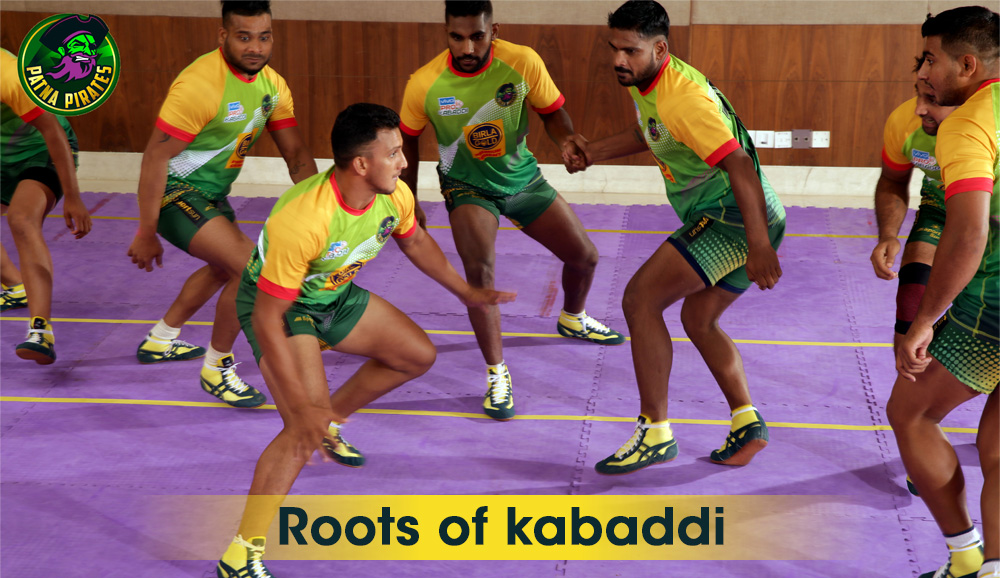If you have grown up playing in the streets and by-lanes of India hu-tu-tu and kabaddi-kabaddi are the two phrases that will be somewhere etched in your heart. Kabaddi, a contact sport that the whole nation swears by has roots that go back to as old as Mahabharata days. There is a popular belief that this sport originated in Tamil Nadu, almost 400 decades ago and has gained traction all over India and world, especially in Punjab, Haryana, Bihar among many other states. It is a team sport, and asks for both skill and power from its player, and amalgamates the characteristics of sports like wrestling and rugby. It was initially conceptualized to help develop self defence, quick reflexes, and responses for counter attack. It is known fondly as kauddi, chedugudu, hadudu, bhavatik , and kapardi etc. In different parts of India and the world. This game spread in other South East Asian countries through sea trade majorly. In addition to that, various forms and styles of kabaddi are played in different parts of India. Amar, Suranjeevi, Huttutoo, and Gaminee are the forms wherein Suranjeevi is the most commonly played form and used in National Games. Amar is usually played in Punjab, Haryana, and Huttuttoo are immensely famous in the state of Maharashtra. India is also the land to host world’s first Kabaddi league. This spot came under the international spotlight during Berlin Olympics,1936 and later in 1938, it was introduced to the Indian National Games. Over the decades the All India Kabaddi Federation (AIKF) came into power and drew certain official rules for the game, that in turn helped to lay the foundation for competitions today.
The country not only is the site of the inception of this revolutionary sport but has also made it a staple sport amongst the masses for the purpose of developing and harbouring a holistic physical and mental well being. From the pre-historic times, group games and sports like kabaddi were the most common as it augmented agility, defence , and aggression. Mahabharata, the Hindu mythological epic is one such example where this sport was practiced and skills were honed by the Pandavas under the guidance of the omnipotent Lord Krishna. Kabaddi was also a tactic of various princes to showcase their vigour and strength. Ancient scriptures throw light on the fact that the sport of kabaddi was established in memory of the courageous Pandava Abhimanyu. From Mahabhartha to present day, Over the years, kabaddi has rightfully earned its place in school and university sports curriculums all over India and other countries. In this day and age, the game is pursued widely all over the world. India unquestionably has been the torchbearer of this sport but it is played with equal ardor in Bangladesh, Japan, Sri Lanka, Iran, Korea, Thailand, Malaysia, China, Trinidad and Tobago, Australia, Canada, United Kingdom, Indonesia and innumerable countries.
Kabaddi is a renowned sport in India, particularly among the rural population of the country. In fact, Tamil Nadu, Andhra Pradesh, Punjab, and Karnataka have deemed kabaddi to be their state sport. One of the best aspects of this sport lies in its utter ingenuousness. It does not require an extensive playing field or equipment, is inexpensive, and also has fairly simple rules and regulations.
A steady influx of players and timely national-level tournaments, the game crawled into the daily lives of people throughout the country. India is, therefore, the mitochondria or the powerhouse of this sport. With the establishment of Pro Kabaddi league in the year of 2014 that is modelled upon the Indian Premier League of Cricket, the face of this sport has changed drastically. In no time, PKL became a raging fireball of success and refreshed the ancient sport with roots that can be traced back to Indian myths and epics and has added the quintessential glam quotient to entice the population to increase viewership. This league has created the right concoction to make the sport of kabaddi something that can people get glued to. This Indian sport Kabaddi teaches us that a beautiful balance of holding on and letting go is pivotal and healthy for the game of life and our journey towards success.


